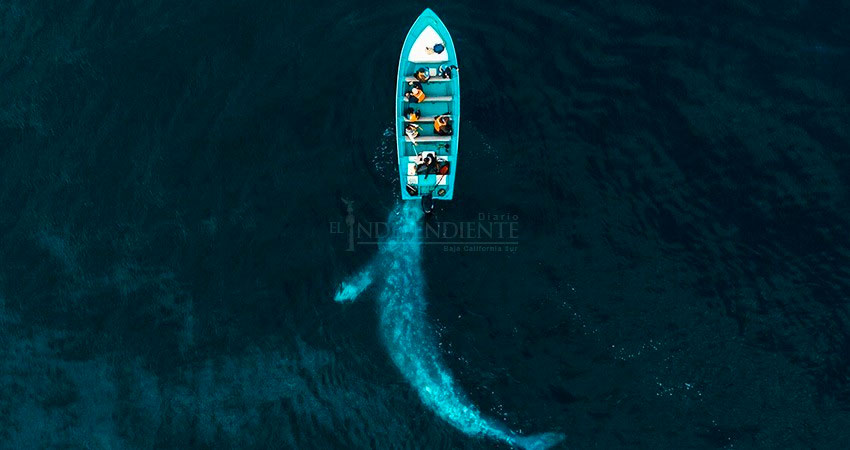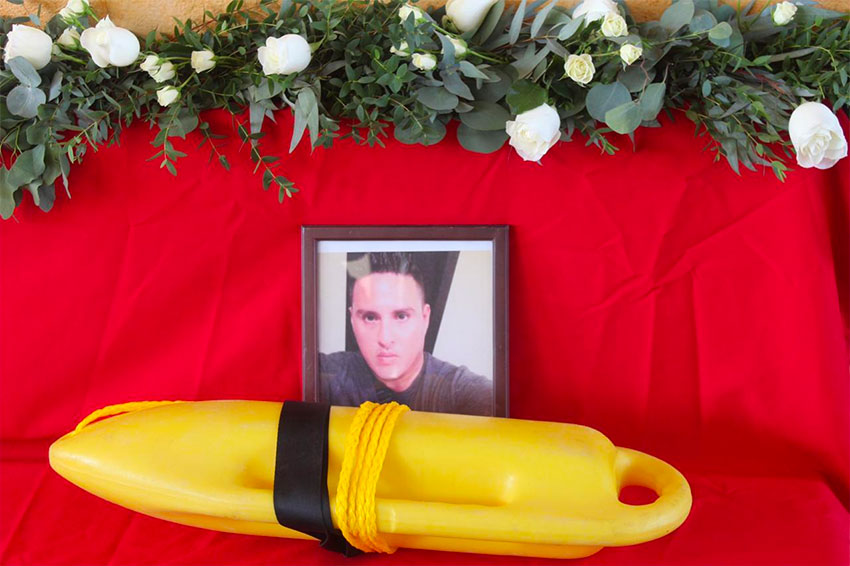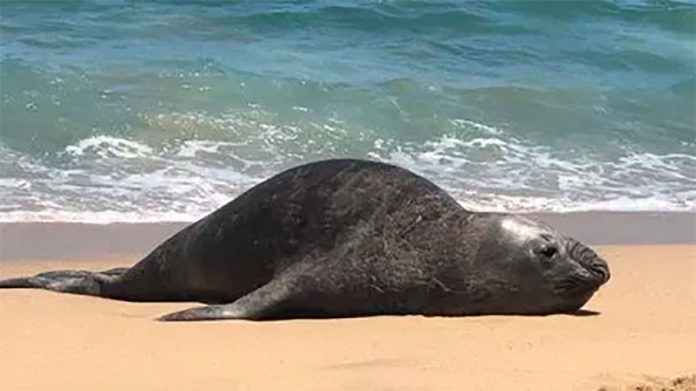The September 3rd death of 137 sea lions whose bodies were found on San Lázaro beach in Comondú, Baja California Sur (BCS), was caused by red tide, scientists said after studying samples of the animals’ vital organs and body fat.
The natural phenomenon occurs when domoic acid produced by a massive bloom of algae accumulates in shellfish, sardines and anchovies which are then eaten by mammals. Reactions can begin 30 minutes after ingestion and may include vomiting, diarrhea, seizures, respiratory distress, coma and sometimes death.
Studies show that the sea lions, 136 males and one female, fed on schools of fish that had consumed the biotoxin.
In an interview with the newspaper Excélsior, Ricardo Rebolledo of the Museum of the Whale and Marine Science in La Paz reported that results obtained by the state’s Marine Mammal Stranding Network and the federal environmental protection agency Profepa are currently being compared before making an official announcement as to the cause of the die-off in the Gulf of Ulloa.
The gulf is located on the west side of the Baja California peninsula between Cabo San Lázaro and Punta Abreojos.
“Sometimes this type of algae does not affect the fish so much, but it does affect those that consume the schools. In this case, they would be dolphins, whales or sea lions,” he said, indicating that a few final tests have yet to be run.
The high mortality of male sea lions, he explained, is because bulls typically band together and separate from cows while hunting.
Rebolledo said that red tide is likely responsible for other sea lions found dead last month in Bahía Asunción and San Juanico.
The red tide was not reported at the time by the Federal Commission for Protection Against Health Risks (Cofepris) because Rebolledo said it may have occurred far from the coast and thus did not represent any danger for humans.
A whale of a photo
Mexican photographer Jospeh Cheires has taken first place in the nature category in the 2020 Drone Awards. His winning photo, which was selected by an international jury, is entitled Gray Whale Pushing Tourists, and was taken in Puerto Adolfo López Mateos.

“At the end of the gray whale season, I was told about a gray whale that, for the last three years, used to play with the boats, pushing them gently,” Cheires says. “So we went back the year after and incredibly the gray whale appeared and this shot is the result.”
López Mateos plays host to the annual Gray Whale Festival in late January, where in years past 14,000 people have gathered to celebrate the return of the leviathan. Gray whales travel to Baja Sur from the Bering Sea to mate and give birth in the state’s warm, coastal waters, making the longest migration in the animal kingdom.
Wayward whale
A beluga whale last seen alive in southern California in June was found dead in the waters off Laguna Ojo de Liebre this week, baffling scientists.
Belugas typically are found in the frigid waters off Alaska and Russia and one had never been seen before in California, much less in BCS. A team of scientists is attempting to recover the body, which from photos did not appear injured or emaciated, to determine the cause of death and, if possible, why the whale journeyed this far south, The Orange County Register reports.
Beluga whales, easily identified for their distinctive coloring, are white to blend into the snow and ice of their northern habitat.
High-end tourism flourishes
High-income tourism in Los Cabos is on the rise despite the coronavirus pandemic, officials say. Luxury travel to the popular resort destination by visitors whose annual income exceeds US $500,000 has increased by 13% over 2019, rising from just 5% of all visitors to 18%, said Rodrigo Esponda Cascajares, director of the Los Cabos Tourism Trust.
He attributes the boost to Los Cabos’ reputation for safety, an increase in direct flights, and the fact that there are relatively few countries people from the United States can travel to due to coronavirus restrictions.
In addition, private aviation increased by 75% in July and 88% in August over last year’s numbers, Esponda says.
Romance tourism, visitors who typically come to Los Cabos to get engaged, married or celebrate an anniversary, is also up, increasing by 2% over 2019. This year 8% of all visitors have come to Los Cabos for a romantic celebration, BCS Noticias reports.
Bars to remain closed
Bar owners in La Paz and Los Cabos demonstrated in the state capital on Wednesday, demanding that bars and nightclubs which have been closed since March be allowed to reopen.
The protest took the form of a caravan of vehicles, many of which made the journey to the Ministry of Tourism from Los Cabos to plead their case, arguing that they are in a critical situation after being closed for seven months, El Universal reports.
In Los Cabos 200 bars remain closed, as do 50 in La Paz, a situation that is unlikely to change any time soon.
“The state health safety committee is there to protect this and all sectors of the population, but we are not here for parties. The time will come, but it is not today,” said the commissioner for the Protection against Sanitary Risks, Blanca Pulido Medrano. “… this is not feasible due to the high risk of contagion that it implies.”
Bars will be allowed to reopen when BCS reaches the low risk “green light” level on the state’s coronavirus stoplight system.
Currently, BCS is at the first of two yellow stages. The state has recorded 10,849 reported cases of the coronavirus and 510 people have died. Health Minister Víctor George Flores says that 94.57% of those infected with the virus in BCS have recovered.

Lifeguard honored
Lifeguard Erick Rasgado Bonilla was honored in Cabo San Lucas this week for his courageous attempt to save the life of a young woman struggling in strong surf that was kicked up by Hurricane Genevieve on August 18.
The 33-year-old selflessly rushed into the waves in front of the Riu Palace Hotel in Cabo San Lucas after noticing the 15-year-old was in peril, but both lost their lives.
“He was a proactive, brave, attentive person with a positive attitude and always willing to help. His loss really hurts us a lot,” said Matías Ponce, general manager of the Riu.
Family, friends and co-workers gathered at the Cabo San Lucas fire department on Wednesday to pay an emotional tribute to Rasgado, honoring him with a plaque that emphasized his courage and heroism, Primero BCS reports.
“There is no greater sacrifice than losing one’s life for that of another,” a portion of the plaque reads.
Mexico News Daily
